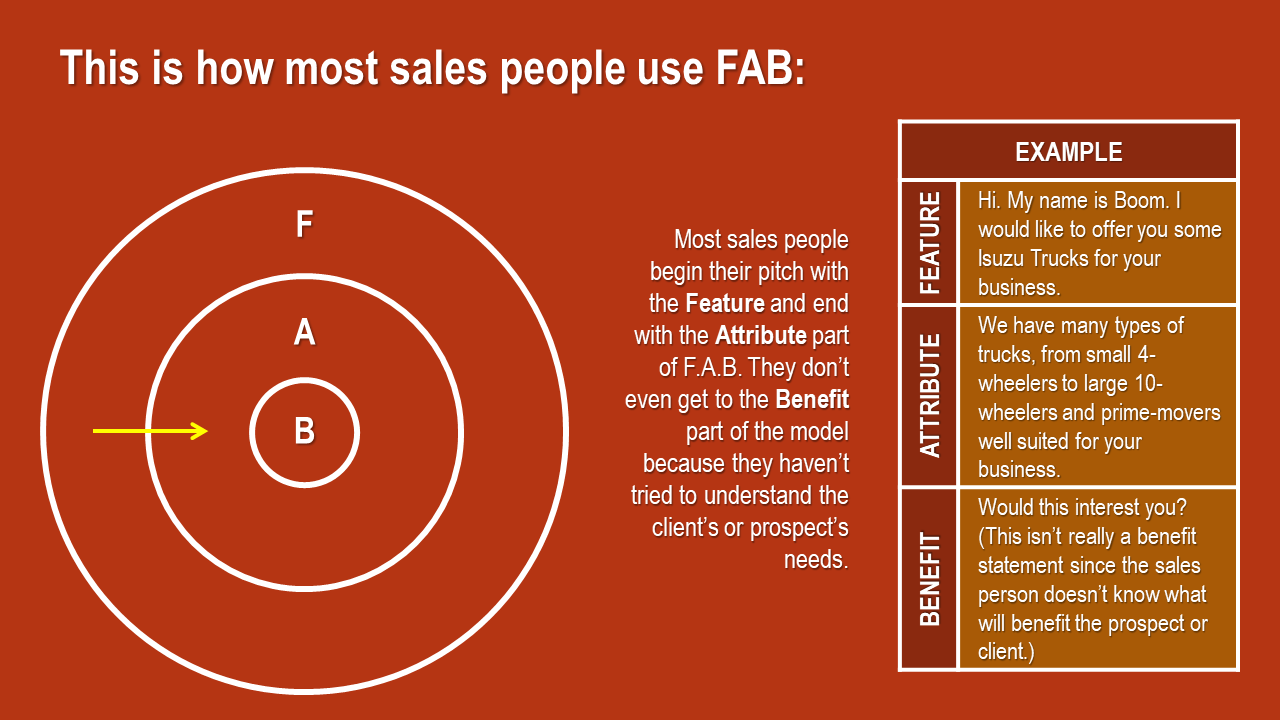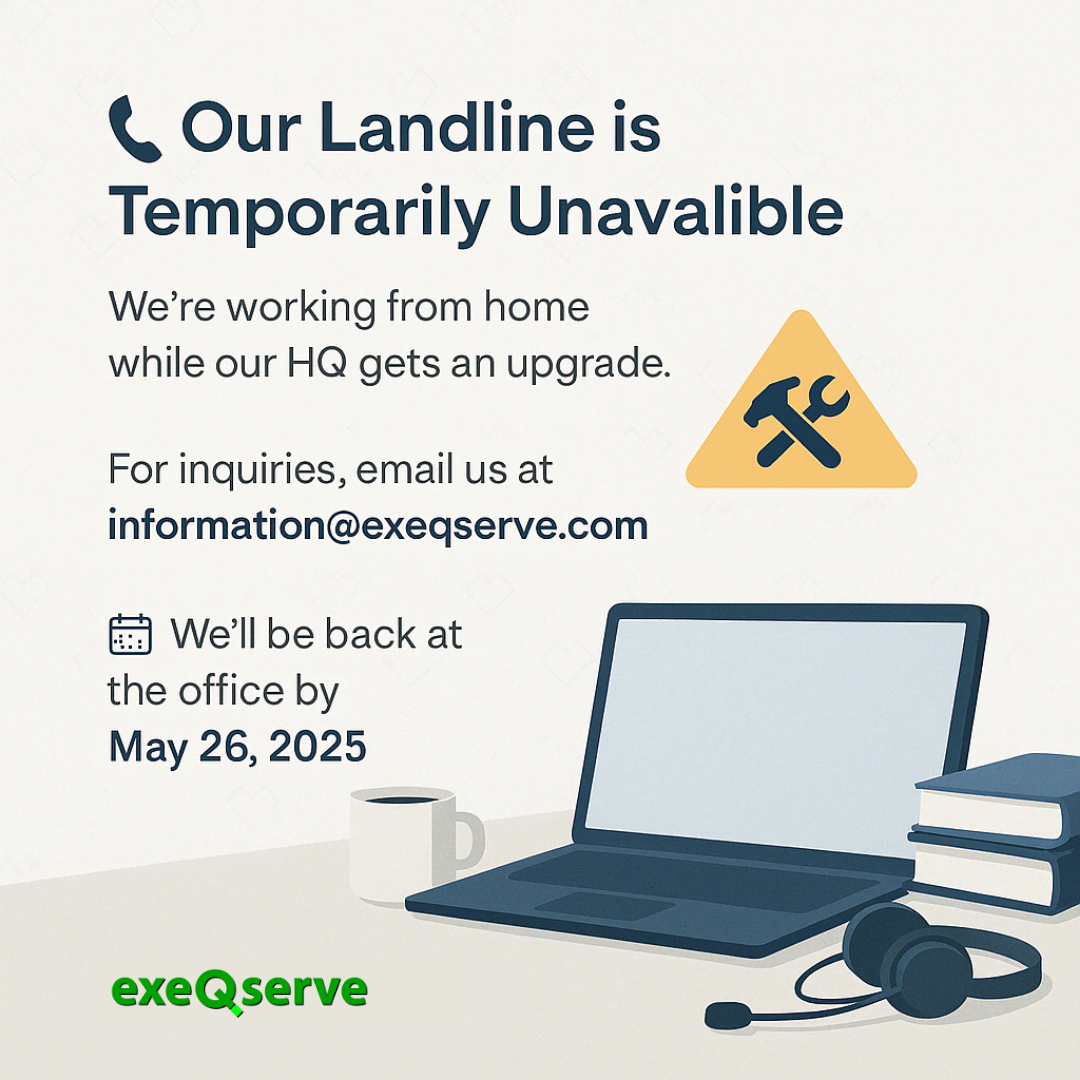By: Boom San Agustin

If you’re an old hand at selling, like me, I’m sure you’re familiar with the Feature-Attribute-Benefit (FAB) tool (more popularly known as the FAB Analysis). However, sometimes frustratingly, many of the younger sales people I’ve been training had no idea what FAB was. So, here’s a short explainer before I get to the meat of the article:
FAB stands for:
- Feature – What your product or service is (like condos, cars, etc.).
- Attribute – What your product or service offers or does (like a place to live in or a vehicle to drive).
- Benefit – What purchasing your product or service will mean for the client (like convenience, durability, speed, prestige, etc.).
Now that we’ve gotten that out of the way, let’s get to why I said that FAB was the most powerful sales tool NEVER used.
Driving a Nail through the Wall with the Handle of a Hammer:
In my more than 30 years of selling, I’ve only ever seen FAB used to its full potential by two people other than myself. One of them was my dad (which is a topic for another day) and the other was the president of a bank I used to work for. The problem is that no one uses FAB as it was intended to be used. It’s a bit like using the handle of a hammer to drive a nail through the wall. It might get the job done a few times; but, it will, ultimately, be grossly inefficient and mostly ineffective. However, if used properly, FAB could improve the way you sell by leaps and bounds (just like a properly used hammer can get the job done a whole lot more effectively and efficiently).
So, just how should we use FAB, you ask? Well, before I answer this, let’s first look at how most sales people use FAB.
How Most Sales People Use FAB:
By looking at diagram 1 below, you may notice that most sales people start with the “Feature Statement” of the FAB tool and end with the “Attribute Statement” of the tool. Most sales people hardly ever reach the “Benefit Statement”.
Diagram 1

Have you noticed anything with the example in diagram 1? You’re right. It’s absolutely boring. You’ll probably notice too that this is how nearly every sales person you’ve talked to makes their pitch. However, the truly sad part of this is it shows that most sales people don’t take the time to understand their clients’ needs.
The Benefit Statement:
We cannot make a “Benefit Statement” without knowing what the client is looking to get from our product or service. Why? It’s because benefit statements are highly personal to the client. It’s their reason for buying. Hence, it’s an emotional reaction. It’s why a client will buy from you. And, each client will be looking for a different benefit to buy.
So, how will you know what your clients need and want? The answer is simple. If you’re in front of the client, ask them questions that will enable them to tell you what benefit they are looking for. Some sample questions are:
- “What are you looking for in a (product)?”
- “What issues are you experiencing in your current product?”
- “Why are you in the market for this (product)?”.
However, whether or not you’re in front of the client, try to find out:
- your customer’s business process and business culture,
- how they use products similar to yours,
- what problems they might encounter when using your product or a rival’s product,
- why the customer needs the product or service,
- how your customer uses such product or service,
- what your customer might think about you,
- how you might stack-up against your competitors,
- your customer’s decision-making process, etc.
How We Should Use FAB:
So, the only thing we have to discuss is how we should use FAB. By looking at diagram 2 (below), you may notice that the right way to use FAB is by starting with the “Benefit Statement” (which you can’t do if you don’t investigate). By doing this, you automatically draw in the client’s attention to your “Attribute” and “Feature” statements.
Diagram 2

Now, if you notice the example in diagram 2, the pitch becomes much more compelling for the client. By simply turning the tool around (hence, my inverted hammer metaphor), we can come up with a much more powerful presentation. As an added benefit for you, if you master the right way of using FAB, you will be able to manage price negotiations better.
So, turn that FAB hammer around and use it the way it was intended to be used.
Learn more about sales through ExeQserve’s Superior Sales Force Management Workshop on August 1-2, 2019. Call us at 4599603 to learn more!









